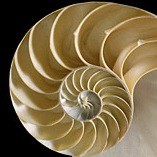This sounds counterintuitive, but while discussing the nature of “conquest” in the Quran in my previous post, it occurred to me the root-word connection between fat’h meaning “conquest” and “Al-Fatiha” — the name of the Quran’s first sura — meaning “the opening,” has implications for the first sura itself. In that post I noted how the fact that both words share a root affects the understanding of of the word “conquest” to have a different nuance to it than the English definition and sense of “conquest” as being more of an “opening” in the conflict than merely a subjugation or advantage that often lends to the winner oppressing the loser. But could that same sort of victory or opening in a conflict also deepen our understanding of Al-Fatiha?
Continue readingal-Fatiha
Ring Composition in the Quran: Al-Fatiha
StandardAn ancient method of literary writing that has (relatively) recently been re-discovered in t ancient and religious texts is Ring Composition, a form of mirror writing called chiasmus, described by the anthropologist and scholar Mary Douglas in her book Thinking in Circles: An Essay on Ring Composition (Yale University Press, 2010) as essentially “a framing device” wherein the first section of a text corresponds in some clearly evident way with the last section, and the middle sections form a mirror pattern around a middle section which is also the central idea or turning point for the entire text. The mirror pattern can be described as ABCBA, expandable to more or fewer (at minimum 3) sections as needed with a center section “C”. This website gives an excellent example from the Quran, analyzing Surat Al-Baqara (the Cow) as well as significant subsections of it, including the famous Ayat al-Kursi (2:255). But for this post I will analyze Surat Al-Fatiha in Ring Composition, which provides evidence of two things: that the first numbered aya must be the Bismallah, which precedes all other Surahs except the 9th (“Repentance”) without being numbered; and that the two great attribute names for Allah the Exalted, Al-Rahman (The Almighty), Al-Raheem (The All-Merciful) express the two polarities of Power/ Yang and Mercy/ Receptivity/ Yin. Below is a graphic of this analysis:
Continue readingThe Difference between Salat and Du’a: What is Prayer?
StandardWhen most people think of “Islamic prayer,” they picture rows of worshippers bowing and prostrating in unison, usually inside a mosque, facing Mecca (Makkah). But the act of worship pictured is salat, a specific act of worship with geophysical as well as body-language physical protocols, requiring a ritual ablution, preferably in water, prior to its performance. The word du’a, on the other hand, is equivalent in meaning to the English word “prayer,” which is simply “supplication.” To refer to salat as “prayer” is convenient, because there is no English equivalent, but inaccurate. Continue reading
Day One: Introduction to al-Fatiha
StandardThe first Sura of the Qur’an is al-Fatiha, or “the Opening.” It is short, consisting of 30 words arranged in seven ayat. Note the word for “verse,” when referring to the Qur’an, is aya (singular) or ayat (plural), and means “sign” or “signs.” This also carries the sense of “miracle” as it does in English. Continue reading




